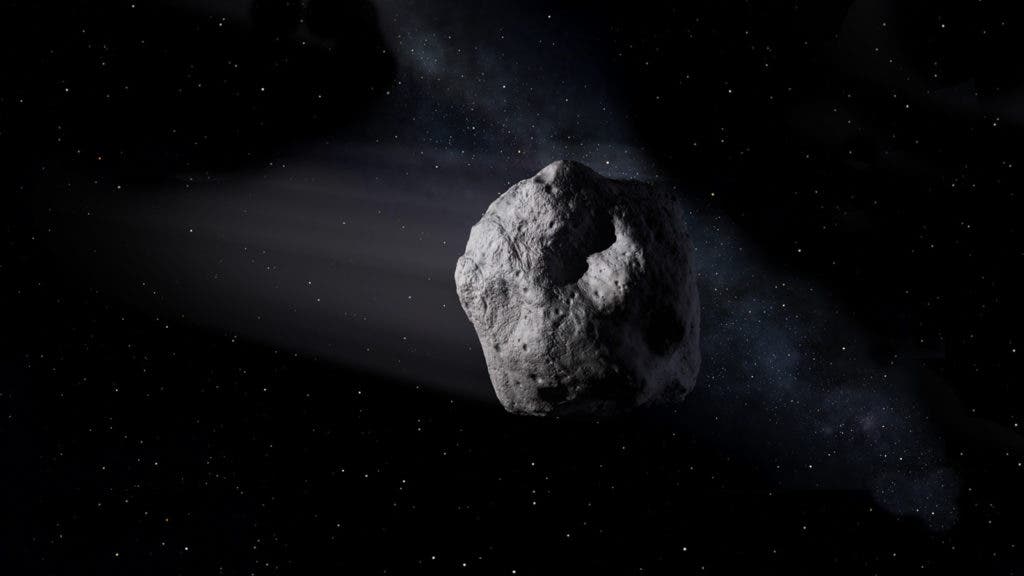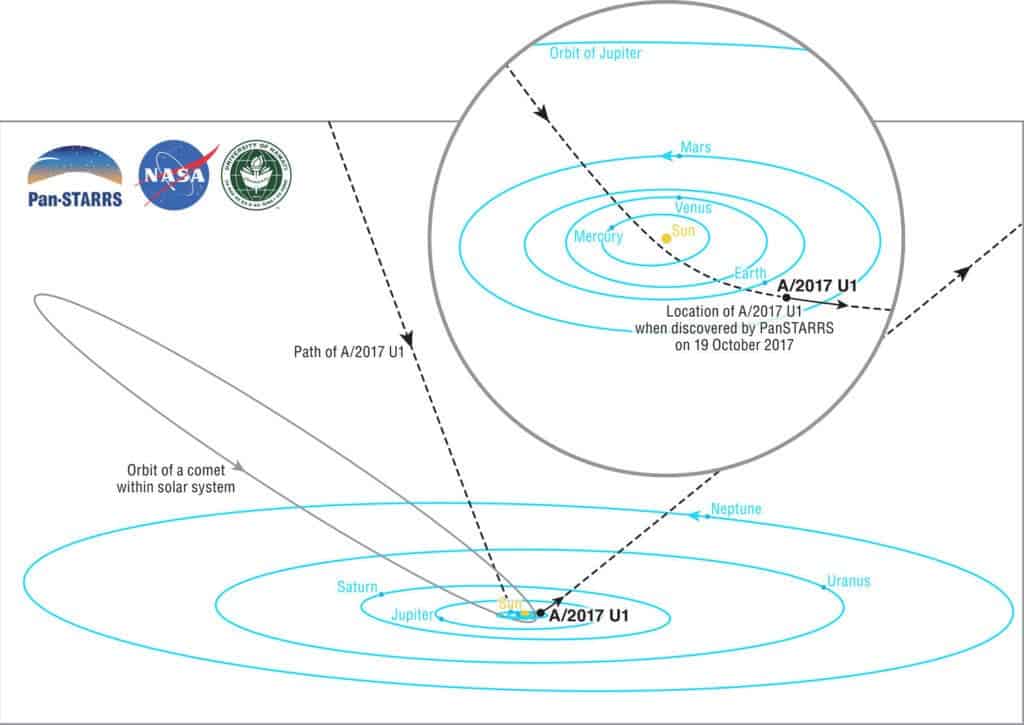Astronomers have reported an alien visitor — a space rock — and it’s the first one we’ve ever seen.

For all the things our solar system has going for it, it doesn’t get that many visitors. Not much at all, actually. This is the first time in history that astronomers have surprised any such object entering our solar system — and they’ve been expecting it for quite a while.
“We have been waiting for this day for decades,” Paul Chodas, manager of the Center for Near-Earth Object Studies at the NASA’s Jet Propulsion Laboratory in Pasadena, California, said in a statement.
“It’s long been theorized that such objects exist — asteroids or comets moving around between the stars and occasionally passing through our solar system — but this is the first such detection,” Chodas added. “So far, everything indicates this is likely an interstellar object, but more data would help to confirm it.”
The object appears to less than a half-kilometer in diameter, and it’s moving at just over 40 kilometers per second — faster than our speediest probes, but still pretty slow for an interstellar visitor. Astronomers have given it the cumbersome name A/2017 U1.
It’s long been assumed that objects like this lurk around our solar system. After all, planetary formation and large-scale processes generate whopping amounts of rocks and dust. But outer space is also incredibly vast, and it takes a certain amount of chance for something to stumble close enough for us to see it. Now, astronomers are trying to direct as many significant telescopes towards the object, in the hopes of better understanding it. Right now, we don’t really know what it’s made of (it could be rock, it could be ice), we don’t really know its color or spectrum, and we don’t really know where it came from. The one thing we do know is that the alien object came from outside our solar system.
“The orbit is very convincing. It is going so fast that it clearly came from outside the solar system,” Paul Chodas continued. “It’s whipping around the Sun, it has already gone around the Sun, and it has actually gone past the Earth on its way out.”

The first one who witnessed A/2017 U1 was Rob Weryk, a postdoctoral researcher at the University of Hawaii. A week ago, on 19 October, he first spotted the object using Hawaii’s Pan-STARRS 1 telescope, which searches the sky for near-Earth objects, but didn’t make much sense of the data. A series of observations by Weryk’s advisor, astronomer Richard Wainscoat, confirmed the sighting, and things started to add up. Right now, it’s not clear how much scientists will be able to learn about, but perhaps the most important thing, Weryk says, is understanding how many of these objects are out there, and how can they affect us.
“The most important response to the ‘Okay, so what?’ question is ‘Well, where do these things come from, and are there more?’” he says. “There is still a lot we don’t know about the solar system, and finding objects like this could help improve our understanding of how the Earth and our solar system first came to be.”
If they want to get a more thorough understanding of it, astronomers should move swiftly. The object is moving out of sight fast, and it’s not returning. Even before it leaves our sight, the object will be hard to study. The more it goes away from our Sun, the less and less light strikes it, making observations increasingly difficult
“This is the most extreme orbit I have ever seen,” said CNEOS scientist Davide Farnocchia, who worked with others to trace A/2017 U1’s path through the solar system. “We can say with confidence that this object is on its way out of the solar system and not coming back.”



